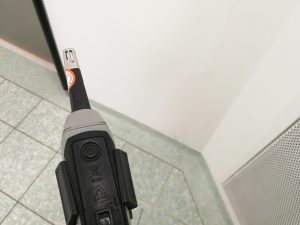August 2022
Inside This Issue
August is often a somewhat quiet month for accreditation related activities as many people finish their summer vacation plans and in September begin to gear up for the remainder of the year. This month Perspectives seems to follow that model with a very short edition, and really only two new content points or action items.
Diagnostic Overshadowing:
The first is the new Sentinel Event Alert #65, discussing “Diagnostic Overshadowing.” The term is defined by TJC as “attribution of symptoms to an existing diagnosis, rather than a potential comorbid condition.” For example, the psychiatric patient complaining of chest pain, may actually be experiencing an MI, not anxiety or some other psychiatric manifestation. The Sentinel Event Alert provides guidance to help create better awareness of this issue.
Direct Data Submission Platform: 
TJC also announced in this month’s Perspectives that their new Direct Data Submission Platform is up and running, along with some deadlines for data submission. On August 1st, organizations can begin to submit their 2021 chart-abstracted measure data. On October 3rd, organizations can begin to submit their 2021 electronic clinical quality measure data. Both the chart-abstracted and electronic quality measure data must be completed by December 31, 2022.
By January 2023 organizations will be able to start submission of both their electronic and chart-abstracted measurement data for 2022. The electronic measures must be completely entered by March 15, 2023, and the chart-abstracted measures must be complete by April 30, 2023. Then in May, the platform will be open to start submitting the first quarter 2023 measures for both electronic and chart-abstracted measures.
Greenhouse Gases: 
The brevity of this month’s Perspectives is more than made up for by the extensive issue of EC News this month. Last month we discussed an article on the greenhouse gas effect of different inhaled anesthetic agents.
This month their new President, Jonathan Perlin, MD, PhD describes that TJC plans to participate in the healthcare industries reduction of greenhouse gases. TJC has personally pledged to reduce its emissions 50% by 2030 and to be net zero by 2050.
As described, TJC has already convened healthcare organizations to gain insight into their efforts to help contain greenhouse emissions. More importantly TJC plans to compile a list of resources to help healthcare organizations seeking to reduce their emissions.
The article does not describe any initiative to develop standards related to reduction of greenhouse gases at this time.
Top Scored Physical Environment:
This month’s edition of EC News contains an article identifying the top physical environment standards and EPs found on surveys in hospitals. TJC and we frequently write about these commonly scored issues, but they continue to plague hospitals on survey because they are so difficult to maintain compliance.
 The number one most frequently scored physical environment EP is in NPSG.15.01.01, EP 1 which requires an environmental risk assessment of psychiatric units, looking for potential suicide hazards. This single EP was scored on the Safer Matrix in the red (high risk) on 204 surveys last year and another 167 times in the orange (moderate risk).
The number one most frequently scored physical environment EP is in NPSG.15.01.01, EP 1 which requires an environmental risk assessment of psychiatric units, looking for potential suicide hazards. This single EP was scored on the Safer Matrix in the red (high risk) on 204 surveys last year and another 167 times in the orange (moderate risk).
This remains difficult because organizations often fail to identify the potential ligature or other hazard in the behavioral health space. Things that you see every day are often overlooked so having outside eyes including clinicians, safety professionals, and facilities staff on the environment assessment tour can be helpful.
Unfortunately, it also appears that some organizations may not place some hazards on their environmental risk assessment, hoping that TJC does not notice the hazard. However, the political maxim that hope is not a strategy seems applicable to this action. More importantly someone could be injured by a known hazard that is not managed.
Lastly, the knowledge about what is safe and what is potentially hazardous changes over time and you need to keep up with the literature as patients find new and unique ways for self-injury with what would have been considered ligature-resistant devices a few years ago.
One of the best resources to help identify environmental hazards and select safer fixtures is the Behavioral Health Design Guide 2022. This reference includes guidance on risk assessment as well as information from many fixture manufacturers for safer design elements.
 The second most frequently scored EP is EC.02.06.01, EP 1 which requires a “interior spaces that are safe and suitable to care.” This reads as somewhat subjective and broad, and it is. Any defect in the patient care space that a surveyor identifies, from torn furniture, damaged walls, stained ceiling tiles, emergency bathroom pull cords that are too short, a gouge in the floor tile, to almost anything that seems dirty or dangerous can be scored against this EP.
The second most frequently scored EP is EC.02.06.01, EP 1 which requires a “interior spaces that are safe and suitable to care.” This reads as somewhat subjective and broad, and it is. Any defect in the patient care space that a surveyor identifies, from torn furniture, damaged walls, stained ceiling tiles, emergency bathroom pull cords that are too short, a gouge in the floor tile, to almost anything that seems dirty or dangerous can be scored against this EP.
This very broad scope can make it easier for just about anyone conducting rounds, from facilities staff, to infection prevention to quality, to administrators to unit staff, or anyone to find things that seem inappropriate in a modern, clean, and safe hospital without memorizing a lot of standards and EPs. You just need a process to identify these issues before TJC does and more importantly the follow up step to correct the identified defects.
 The third most frequently scored EP is EC.02.05.01, EP 15. The standard discusses utility systems and EP 15 specifically addresses airborne contaminants which can be biologic agents, fumes, dust, temperature, humidity, air exchanges or pressure relationships in critical spaces.
The third most frequently scored EP is EC.02.05.01, EP 15. The standard discusses utility systems and EP 15 specifically addresses airborne contaminants which can be biologic agents, fumes, dust, temperature, humidity, air exchanges or pressure relationships in critical spaces.
Again, there is a broad array of issues addressed in this EP and there are two key activities leading to success. Staff working in such critical areas need to know if conditions are appropriate and second there needs to be a process to correct the defect immediately.
We frequently find on consultations and TJC frequently finds on survey that conditions are not appropriate for the specialized critical tasks taking place in that space. We hear from organizations a variety of root causes, from not knowing the requirement, to knowing the requirement, but not having a tool to detect if it being met such as an air pressure meter.
Unfortunately, we sometimes also hear that staff, know the requirement, know it is not being met, but have been unable to get the physical parameter, such as air pressure, temperature, or humidity to come into compliance.
Again, it sometimes appears that there is a strategy of “hope” that TJC does not notice the defect, because it is difficult and/or expensive to get the situation corrected. However, it needs to be recognized that the space should not continue to be used for the critical function if it cannot be performed with air exchanges, temperature, humidity and pressure all in the appropriate range.
 The fourth most frequently scored EP is EC.02.02.01, EP 5 requiring the organization to “minimize risks associated with selecting, handling, storing, transporting, using and disposing of hazardous chemicals.” We sometimes refer to this standard as the “eyewash standard,” because so many of the RFIs that come from this EP deal with eyewashes or lack thereof. Again, a wide array of problems can arise with this EP, starting with not knowing that an area has purchased and is using corrosive chemicals without an eyewash present.
The fourth most frequently scored EP is EC.02.02.01, EP 5 requiring the organization to “minimize risks associated with selecting, handling, storing, transporting, using and disposing of hazardous chemicals.” We sometimes refer to this standard as the “eyewash standard,” because so many of the RFIs that come from this EP deal with eyewashes or lack thereof. Again, a wide array of problems can arise with this EP, starting with not knowing that an area has purchased and is using corrosive chemicals without an eyewash present.
Rounding activities have to identify what chemicals are being purchased and used and what the safety data sheet says about worker protection requirements. Then there is the complexity of having a fully functioning, properly accessible, and properly tested eyewash available. Lots of things can go wrong from not having tepid water from a mix of hot and cold water sources, locking the eyewash behind a closed door, failure to test the functioning of the eyewash, or having the eyewash too far away from where the hazardous chemicals are being used.
Sadly, we also see situations where staff don’t know how to activate the eyewash. The scope of this EP does go beyond just the use of hazardous chemicals, to also include appropriate safety measures for staff transporting and disposing of hazardous chemicals.
We do suggest sharing this EC News article with facilities staff and anyone else involved in rounding activities. There may be opportunities to identify and correct these frequently scored issues by making better use of the different staff performing rounding or inspections. It is also possible that you may be able to incorporate some of this content in annual training curricula. The use of pictures of these types of defects you have gathered from rounding may help promote learning of the staff at a unit or department level.
The article in EC News right after this one is focused on office based and ambulatory surgery facilities, however it is a great primer on hazardous chemicals and materials that is equally important to hospital readers. There is guidance for these other provider types that would clearly benefit hospital readers given that we just discussed this is the 4th most frequently scored issue in hospitals.
GFCI Outlets: 
EC News also has a short article responding to a question on when you need a ground fault interruption outlet. The usual wet locations that most readers are already familiar with are mentioned along with a reference about vending machines in hospitals. Vending machines built since 2005 should already have a GFCI built into their plug.
So, most vending machines in use in a hospital should have this feature, but do take a look to verify that any vending machine in use has this safeguard. This could be somewhat of a gotcha if the vending machine was not constructed to this NFPA specification, or is not clear that the vending machine has this safety device.
Emergency Operations Plan Requirements:
The last article in EC News discusses required content in your emergency operations plan, which as you know had many changed requirements as of July 2022. Attached to this article is one of their checklists from a recent JCR publication to verify that your EOP has all the required content elements.
We would suggest forwarding this to your EM team and carefully reviewing this checklist and your plan to verify that your EOP is up to date with all the new requirements. Also, we encourage readers to use the “show me” methodology, using the comments section of the checklist to document dates, responsible individuals, and where required content issues are located in your EOP.
Covid Vaccination Requirements for State Surveyors: 
CMS had two memos of importance to hospital readers this past month. The first, QSO 22-18 was issued June 16th. This memo actually has no new requirements, but rather rescinds an earlier memo, QSO 22-10, originally issued January 25th, 2022.
In the January memo CMS discussed Covid vaccination requirements for state surveyors and advised that unvaccinated state or accrediting body surveyors should not participate in onsite survey activities.
That guidance appears to have crossed a line in the relationship between states and CMS and accreditors and CMS. CMS uses a term in its June memo, indicating that the earlier memo has undergone a “rescission.” We had to look that term up although it sounds very similar to more familiar term rescind, but rescission we learned is more of a contractual term where the parties go back to where they were before. In this case CMS and the state agencies, CMS and accreditors go back to their relationship as if the January 25th memo had never been issued.
Infection Prevention & Antibiotic Stewar dship:
dship:
CMS also issued QSO 22-20 on July 6th updating its guidance on infection prevention and antibiotic stewardship programs. Fortunately, the lengthy discussion we had last month in this newsletter about TJC’s new antibiotic stewardship standards gives us the impression that CMS and TJC coordinated their efforts, as we have not (yet) identified conflicting guidance.
CMS does address both infection control issues and antibiotic stewardship requirements in its July memo; and as they usually do when issuing an update, shows the updated language in red typeface, so be sure to use your color printer if you print this memo.
CMS also uses its customary narrative language rather than the TJC bullet point or EP approach. Some of this narrative can be informative to your depth of understanding about the CMS requirements and new TJC standards.
One infection prevention requirement that requires some focus is tag A-0748. CMS provides guidance to its surveyors to verify that the infection preventionist(s) has been appointed by the governing body based on recommendations from the medical staff and nursing leadership.
A very similar requirement has been created in tag A-0760 for your physician and pharmacist leaders on the antibiotic stewardship program. The one difference is that the antibiotic stewardship leaders should be recommended by medical staff and pharmacy leaders. Many of our readers may have to update their documentation so that it is clear the people you have performing these two functions come with those recommendations and have formally been appointed by the governing body.
Tag A-0760 also has an unusual and subjective requirement in its guidance to state surveyors to “review the criteria the hospital used to determine the resources necessary to operate effectively and ensure the resource allocation matches the determined need.”
While no formal criteria have been published by CMS, we assume they will question the size and scope of the hospital in relationship to the resources the hospital dedicates to antibiotic stewardship functions.
Tag A-0771 in its surveyor guidance asks surveyors to verify that antibiotic stewardship and infection prevention programs are coordinated with QAPI leadership, medical staff, nursing services, and pharmacy services.
We would encourage cross reporting of activities of antibiotic stewardship and infection prevention at QAPI, medicals staff, nursing, and pharmacy departmental meetings. In particular this tag mentions infection prevention and antibiotic stewardship lessons learned should be used to help shape hospital training programs.
Tag A-0775 builds upon this concept of contributing to training by specifically stating the infection preventionist(s) “must take an active role in competency based training and education of hospital personnel including medical staff and contractors.”
Later in tag A-0781, this same requirement exists for the leaders of the antibiotic stewardship program to develop competency based training and education of hospital personnel, medical staff and contractors on the practical application of antibiotic stewardship guidelines, policies and procedures.
The memo concludes with authorization to conduct infection prevention and antibiotic stewardship using a corporate or multihospital system approach. Much like other CMS guidance to multihospital systems, it remains a requirement that the unique needs and patient population of each facility must be accounted for.
Do read this content thoroughly and be sure to share with infection prevention, and antibiotic stewardship leaders to ensure compliance.
Consultant Corner
Dear Readers,
Does the once-every-three-year, large mock survey leave too little time for you to implement change?
Is staying current and informed important to your organization?
Our Continuous Accreditation Support (CAS) Program was designed to provide you a long-term strategy for successful survey outcomes as multiple visits are scheduled throughout the accreditation cycle and is completely tailored to fit your needs.
Jennifer Cowel, RN MHSA
JenCowel@PattonHC.com
Kurt Patton, MS RPh
Kurt@PattonHC.com
John Rosing, MHA
JohnRosing@PattonHC.com
Mary Cesare-Murphy, PhD
MCM@PattonHC.com
